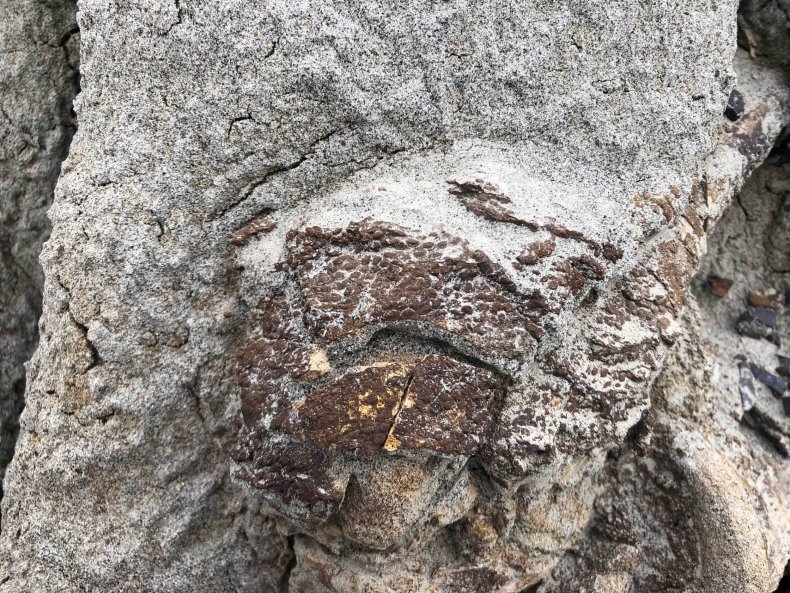Paleontologists are excavating a mummified dinosaur from a rock on Canada, with the deceased creature believed to be totally covered in skin.
The dinosaur fossil, which was uncovered at the Dinosaur Provincial Park in Alberta, Canada, was first discovered by paleontologists from the University of New England and the Royal Tyrrell Museum in Drumheller in 2021, according to a blog from the museum.
Since then, excavation efforts have continued.
The skeleton belongs to a herbivorous species called a hadrosaur, also known as the ‘duck-billed dinosaur.’ So far, only the animal’s tail and foot has been uncovered.

Based on findings from the 2022 field season, paleontologists believe a near-complete skeleton lies within the rock, due to the way its tail is oriented.
And, they also think the entire skeleton is completely covered in skin.
A timelapse video from the Royal Tyrrell Museum shows paleontologists gradually uncovering the rare discovery.
Hadrosaurs were a relatively common species that lived during the Late Cretaceous period, around 75 to 77 million years ago.

Paleontologist at the Royal Tyrrell Museum and lead researcher of the specimen, Caleb Brown, told Newsweek that these specimens “are often referred to as mummies.”
“Finding dinosaur skin is rare, but is more common for some types of dinosaurs than others. Duck-billed dinosaurs (hadrosaurs) are one group of dinosaurs where skin is most commonly preserved,” he said.
“This skin is often preserved as a few small fragments or chunks that are associated with the skeleton,” Brown added.
“When we are really lucky, we find a skeleton which is nearly entirely covered in skin. Over the past 120 years, several hadrosaurs with skin have been found in Dinosaur Provincial Park.”
Brown said discovering an entirely preserved skeleton, as they believe it is, is “relatively rare” as parts of fossils are usually lost due to erosion.
“The parts of the skeleton that are exposed are covered in preserved skin. The hope is that the rest of the skeleton (the parts still in the rock) are similarly covered in skin. If this is the case, we could have a hadrosaur ‘mummy’” Brown said.
This fossil likely belonged to a young dinosaur due to its small size. This will give paleontologists new insight into how this species grew.

“Most dinosaur fossils are just the bones. You can learn a lot from bones, but there is still a lot of anatomy that is missing. When the skin is preserved, you can fill in the gaps in some of the details about the anatomy and lives of these animals,” Brown said.
“The skin can give us details about how the animal interacted with its environment and other dinosaur.”
The Dinosaur Provincial Park, where the fossil was uncovered, is a UNESCO World Heritage Site, which has been important to paleontologists for over a century. According to the Royal Tyrrell Museum, each year paleontologists uncover new finds at the site.